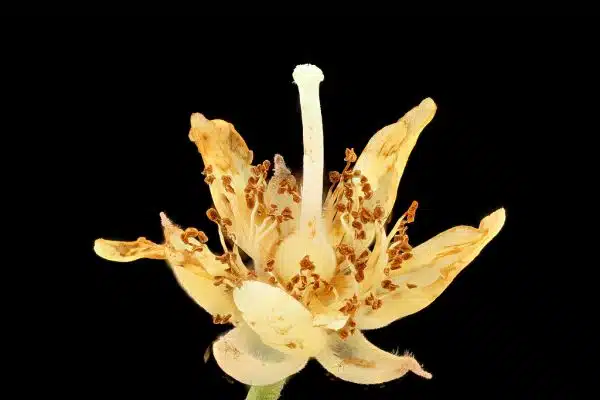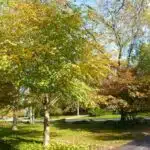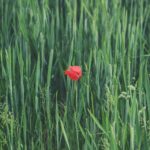Basswood, also known as Tilia Americana, is a deciduous tree that is native to North America. Basswood trees are commonly planted in urban landscapes and are known for their attractive foliage, fragrant flowers, and ornamental value. As an arborist, it is important to understand the care and growing requirements of basswood trees to ensure their health and longevity.
Proper care of basswood trees involves regular pruning, fertilization, and pest management. Pruning should be done in the late winter or early spring before new growth begins. This helps to shape the tree and remove any dead or diseased branches. Fertilization should be done in the spring with a slow-release fertilizer to promote healthy growth. Pest management is also crucial for basswood trees as they can be susceptible to aphids and Japanese beetles. By understanding these care requirements, arborists can ensure that basswood trees thrive in urban landscapes and continue to serve our communities for years to come.
Overview Of Tilia Americana
As arborists, we are in the business of restoring habitats and bringing life to landscapes. One tree that stands out in our efforts is the Tilia Americana, commonly known as Basswood. This deciduous tree species is native to North America and grows up to 80 feet tall, with a diameter of up to 3 feet. The Basswood has an extensive root system that anchors it firmly to the ground, making it ideal for erosion control.
The Tilia Americana is not only essential for stabilizing soil; it also has medicinal properties. Its bark and leaves have been used for centuries in traditional medicine to treat fever, coughs, headaches, and other ailments. The tree’s fragrant flowers are also used to make tea that aids digestion and promotes relaxation.
For those who have a subconscious desire for serving others, planting a Tilia Americana on their property can be a way of giving back to nature while enjoying its many benefits. However, proper care is crucial in ensuring the tree’s health and longevity. In the following section, we will discuss the importance of providing adequate water, sunlight, pruning, and pest control measures for this majestic species.
The Importance Of Proper Care
After understanding the overview of Tilia Americana, it is important to recognize the significance of proper care for basswood trees. Proper care can help ensure that your trees remain healthy and strong. This is particularly important for those who desire to enjoy the benefits of basswood trees, such as their beautiful flowers and shade provided by their broad leaves.
The importance of proper care cannot be overstated. Proper care helps to maintain tree health and vitality, allowing them to continue providing benefits for years to come. These benefits may include improved air quality, increased property value, and reduced energy costs due to shading provided by larger trees.
By taking the time to understand soil requirements and other care needs, you can help ensure that your basswood trees thrive. Understanding soil requirements is particularly important as different soils have different nutrient levels and drainage capabilities. By ensuring that your basswood trees are planted in soils that suit their needs, you can help them grow stronger and healthier over time.
Understanding Soil Requirements
Soil composition is a crucial aspect of basswood care and growing. The soil needs to be well-draining, with good water retention capacity for optimal growth. Basswood prefers loamy soils that are rich in organic matter, which helps retain moisture and nutrients. It is also important to ensure that the soil is not too compacted, as this can impede root development.
Soil pH levels are another critical consideration when it comes to basswood care. A neutral pH range between 6.0 and 7.5 is ideal for this tree species. Soil pH affects nutrient availability, and acidic or alkaline conditions can lead to stunted growth or even death of the tree. Regular monitoring of soil pH levels and adjusting them as needed through fertilization or other methods can help ensure healthy growth.
Understanding the requirements for soil composition and pH levels will play a key role in the success of your basswood growing efforts. By ensuring that your trees have access to well-draining, nutrient-rich soils with a neutral pH range, you can promote healthy root development and optimal growth. In the next section, we will explore watering needs and techniques for basswood trees to further support their health and longevity.
Watering Needs And Techniques
As the saying goes, “no man is an island,” and in the same way, trees need water to survive. When it comes to watering basswood trees, it is essential to understand that the frequency and quantity of water you give your trees can affect their overall health. Watering frequency for basswoods depends on various factors such as soil type, temperature, humidity levels, and tree size.
To ensure optimal growth of your basswood tree, you must maintain consistent soil moisture levels. The ideal soil moisture level is between 50% to 75%. Overwatering or underwatering can lead to stress on the root system and may cause damage, leading to stunted growth or even death of the tree. You can check if your tree needs watering by inserting a screwdriver or any other long object into the soil; if it penetrates quickly with no resistance or dryness, then it’s time for watering.
Knowing when to water your basswood tree is crucial in ensuring its survival. In general, newly planted trees require more frequent watering than established ones. It’s best to water your newly planted basswood every two days during hot weather and once a week during cooler seasons until they are fully established. Once established, you can reduce the frequency of watering but maintain consistent moisture levels in the soil by checking regularly with a moisture meter or by digging into the soil around the root zone.
Maintaining proper watering techniques is essential for ensuring healthy growth of basswood trees. With adequate knowledge of watering frequency and keeping consistent soil moisture levels, you can help ensure that your trees thrive throughout their lifespan. In the next section, we will discuss another critical factor that affects planting success – understanding when is the best time to plant basswood trees.
The Best Time To Plant
The best planting season for basswood trees is during the fall or spring. These seasons offer mild temperatures and enough moisture to promote healthy growth in young trees. When planting during the fall, it’s critical to get your tree in the ground before the first frost arrives. During the spring, plant your basswood after the last frost has passed.
Soil preparation techniques are crucial when planting basswood trees. The soil should be well-draining and have a pH level between 6.0 to 7.5. If your soil is too acidic or alkaline, you can amend it with lime or sulfur respectively. Ensure that you dig a hole that is two times wider than the root ball of your tree and add organic matter like compost or peat moss to improve soil structure.
Before planting your basswood tree, look for signs of disease or pests on other plants in your garden. If you notice any issues, treat them before planting to prevent them from spreading to your new tree. After planting, give your basswood plenty of water and mulch around its base to retain moisture and control weeds.
- Four things you need to know about planting basswood trees:
- The best time to plant is during fall or spring.
- Soil preparation techniques are crucial for healthy growth.
- Check for signs of disease or pests before planting.
- Water regularly and use mulch around the base of the tree.
As an arborist or tree care specialist, it’s essential to understand when it’s best to plant a particular species like basswood trees. By following proper soil preparation techniques and ensuring that there are no underlying issues with disease or pests before planting, you’ll set yourself up for success in growing healthy and flourishing trees.
Moving forward into understanding sunlight and shade preferences for basswood trees, it’s important first to consider how these factors impact their growth patterns.
Sunlight And Shade Preferences
One important consideration when growing basswood trees is the amount of sunlight they receive. Basswoods are considered to be shade-tolerant trees and can grow in areas with partial shade or full sun exposure. However, to achieve optimal growth and development, it is best to plant them in areas with at least six hours of direct sunlight each day.
Basswoods prefer a mild climate and thrive in USDA Hardiness Zones 3 through 8. They can handle extreme temperatures but do not tolerate drought or excessively wet soil conditions. During periods of drought, it is essential to water them regularly to maintain their health.
To ensure proper growth and development, it is vital to understand the optimal exposure for basswood. The ideal location for planting should have fertile, well-draining soil with plenty of space for root expansion. When planted in an area with too much sun exposure, they may experience leaf scorching or other forms of damage. Conversely, when planted in too much shade, they may become leggy or produce fewer flowers.
Transition: Now that we’ve discussed the importance of sunlight and shade preferences for growing healthy basswood trees let’s talk about how pruning can optimize their growth even further.
Pruning For Optimal Growth
Basswood trees are known for their large, heart-shaped leaves and fragrant blooms that attract pollinators such as bees and butterflies. In order to maintain the health and beauty of a basswood tree, it is important to employ proper pruning techniques. Pruning not only removes dead or diseased branches, but it also encourages growth optimization by directing the tree’s energy towards its most productive areas.
The first step in pruning a basswood tree is to identify any branches that are dead, diseased, or damaged. These branches should be removed immediately as they can pose a threat to the overall health of the tree. The second step involves removing any competing or crossing branches that may cause rubbing or damage to other parts of the tree. Finally, selective pruning can be utilized to direct growth towards specific areas such as promoting lateral branching for increased foliage.
Proper pruning techniques can greatly benefit a basswood tree’s health and appearance, but it is important to exercise caution during the process. Over-pruning can lead to weakened limbs and poor growth, while under-pruning can result in overcrowding and potential safety hazards. For optimal results, it is recommended to consult with a professional arborist or tree care specialist who can provide expert guidance on pruning techniques for your specific basswood tree.
Moving forward with fertilization tips and techniques for basswood trees, it is important to understand the best practices for supplying essential nutrients without over-fertilizing which could cause harm or even death to the plant.
Fertilization Tips And Techniques
Fertilization is an important aspect of basswood tree care. It provides the necessary nutrients to maintain the tree’s health and promote growth. There are two types of fertilizers to choose from: organic fertilizers and chemical fertilizers.
Organic fertilizers are made from natural materials like compost, manure, and bone meal. They improve soil quality by increasing microbial activity and adding organic matter. Organic fertilizers release nutrients slowly over time, providing a steady supply of nutrients to the tree. They are also environmentally friendly and safe for use around children and pets.
On the other hand, chemical fertilizers are made from synthetic materials that provide an immediate boost of nutrients to the tree. They are fast-acting but can cause damage if not used properly. Chemical fertilizers can also negatively impact soil quality, harming beneficial microbes in the soil. Therefore, it is recommended to use chemical fertilizers sparingly and only when necessary.
Table: Comparison between Organic Fertilizers and Chemical Fertilizers
| Aspect | Organic Fertilizers | Chemical Fertilizers |
|---|---|---|
| Source | Natural materials (compost, manure, bone meal) | Synthetic materials |
| Nutrient Release | Slow-release over time | Immediate boost |
| Soil Quality | Improves soil quality by increasing microbial activity and adding organic matter | Harms beneficial microbes in the soil |
| Safety | Environmentally friendly; safe for use around children & pets | Can cause damage if not used properly |
To ensure proper application of fertilizer, it is recommended to consult with a certified arborist or tree care specialist. They can assess the specific needs of your basswood tree and recommend an appropriate fertilizer regimen that takes into account factors such as age, size, location, and overall health.
Next up: Common Pests and Diseases to Watch Out For…
Common Pests And Diseases To Watch Out For
Aphids, Scale, Borer, and Blight are common pests to watch out for in basswood trees. Mildew, Root Rot, Rust, and Fungus can be problematic for basswood trees as well. Woodpecker Damage, Oak Wilt, Dutch Elm Disease, Bark Beetles, Japanese Beetles, Fireblight, and Spider Mites are additional diseases and pests to consider when caring for a basswood tree. All of these issues can be prevented or managed with proper tree care and maintenance.
Aphids
Aphids are one of the most common pests that can infest basswood trees. These tiny insects feed on the sap of the tree, causing leaves to turn yellow and curl up. If left untreated, aphids can cause significant damage to the tree and even lead to its death. As a tree care specialist, it is important to be able to identify aphids early on so that you can take action quickly.
One effective way to control aphids is through the use of natural predators. Ladybugs, lacewings, and parasitic wasps are all natural enemies of aphids and can help keep their populations in check. Introducing these beneficial insects into your garden can be an effective way to prevent aphid infestations from getting out of control.
If natural predators are not enough, chemical control may be necessary. However, it is important to use caution when using pesticides as they can harm beneficial insects and other wildlife in your garden. Always follow the instructions on the label carefully and only use pesticides as a last resort. When using chemical control methods, it is also important to monitor the tree closely for any signs of re-infestation so that you can take action quickly if needed.
In conclusion, while aphids can be a frustrating pest for basswood trees, there are several ways to manage them effectively. By being proactive in identifying and treating infestations early on with natural predators or chemical control as a last resort, you can help ensure that your basswood tree stays healthy and beautiful for years to come.
Scale
Insect infestations are a common problem that arborists encounter when caring for trees. Another pest that can attack basswood trees is scale. Scale insects are small, oval-shaped pests that feed on the sap of the tree. They often appear as small bumps or scales on the bark and leaves of the tree. If left untreated, they can cause significant damage to the tree.
Treatment options for scale infestations include both natural and chemical control methods. One natural method is introducing beneficial insects such as ladybugs or lacewings to the area to prey on scale insects. Additionally, horticultural oil or insecticidal soap can be used to control scale populations without harming beneficial insects. However, if the infestation is severe, chemical control may be necessary.
As with any pest infestation, early detection and treatment are key in preventing long-term damage to your basswood tree. Regular monitoring of your trees for signs of pests such as scale can help catch an infestation before it becomes too severe. By using effective treatment options and taking preventive measures, you can help keep your basswood trees healthy and thriving for years to come.
Identifying And Managing Aphids
As the basswood tree grows, it may encounter a variety of pests and diseases that can hinder its progress. One of the most common threats to this species is aphids, which are small, pear-shaped insects that feed on the sap of the tree’s leaves. If left unchecked, aphids can cause significant damage to the basswood’s foliage, stunting its growth and reducing its ability to photosynthesize.
Identifying an aphid infestation early is key to managing the problem effectively. Natural predators such as ladybugs and lacewings can be helpful in controlling aphid populations, but chemical control may also be necessary in severe cases. Prevention techniques like regular pruning and proper fertilization can help deter these pests from taking hold in the first place.
Early detection is crucial for effective treatment of an aphid infestation. If you suspect your basswood tree has been infected with aphids, inspect it regularly for signs of damage such as yellowing or curling leaves. Once detected, a combination of natural predators and chemical control methods can be employed to manage the infestation effectively. In the following section, we will discuss prevention and treatment options for another common pest: Japanese beetles.
Japanese Beetle Prevention And Treatment
Basswood is a favorite tree for Japanese beetles. These insects can cause significant damage to the foliage, which could lead to stunted growth or even death of the tree. To prevent Japanese beetle infestation, it is essential to maintain healthy soil conditions that promote strong root development. Proper watering, fertilization, and mulching are crucial in keeping the tree robust and resistant to pests.
If an infestation does occur, there are natural remedies that can help control Japanese beetles. One such approach is introducing predatory insects that feed on the beetles’ larvae and eggs. Another method involves creating a physical barrier around the tree using netting or cheesecloth. In severe cases, chemical treatments like insecticides may be necessary. However, it’s crucial to follow instructions carefully when using pesticides as they can harm beneficial insects and other wildlife.
In conclusion, prevention is always better than cure when it comes to Japanese beetle infestation in basswood trees. By keeping your trees healthy and employing natural remedies like predatory insects or physical barriers, you can significantly reduce the risk of pest damage without harming the environment. If all else fails, chemical treatments may be needed as a last resort but should only be used with caution and care for their potential harmful effects on wildlife and other organisms in your garden ecosystem.
Moving forward into signs of stress and how to address them – one common indicator of stress in basswood trees is wilting leaves during hot weather or droughts. Keep reading for tips on how to identify these signs early on before they become a more serious issue for your trees’ health and longevity.
Signs Of Stress And How To Address Them
- Trees in stressful environments may show signs of stress, such as wilting, yellowing leaves, or dieback.
- To address stress, it is important to diagnose the cause of the stress, such as disease, insect infestation, or root damage.
- Diagnosing stress in a tree can be difficult, and may require the assistance of a qualified arborist.
- Once the cause of the stress is identified, appropriate steps can be taken to address the stressors, such as proper pruning, fertilization, irrigation, or pest management.
- Other methods for addressing stress may include improving soil conditions and providing additional shade or wind protection.
- Regular monitoring can help to ensure that any signs of stress are caught early, thus reducing the severity of the potential damage to the tree.
Signs Of Stress
As an arborist or tree care specialist, it is important to keep a close eye on the signs of stress that a basswood tree may exhibit. These trees are generally hardy and can withstand a variety of growing conditions, but they can still fall prey to environmental factors and insects that cause stress.
Common causes of stress in basswood trees include drought, poor soil quality, insect infestations, and disease. When stressed, these trees may exhibit wilting or yellowing leaves, stunted growth, and premature leaf drop. Additionally, pests such as borers or aphids may target weak or stressed trees more readily than healthy ones.
To prevent stress in basswood trees, it is important to provide them with adequate water and nutrients. Regular fertilization and mulching can help maintain soil moisture levels and promote healthy growth. Additionally, pruning diseased or damaged branches can help prevent insect infestations from taking hold. By monitoring your trees regularly and addressing signs of stress promptly, you can ensure the health and longevity of your basswood trees for years to come.
Address Stress
As an arborist or tree care specialist, it is crucial to understand the signs of stress in basswood trees and how to address them promptly. Stress can be detrimental to the health and longevity of a tree, making prevention and management techniques essential. Adequate water, nutrients, and soil moisture levels are necessary to prevent stress in basswood trees.
To address stress in basswood trees, it is important to practice proper pruning techniques. Pruning diseased or damaged branches can help prevent insect infestations from taking hold and spreading throughout the tree. Additionally, regular fertilization and mulching can help maintain soil moisture levels and promote healthy growth.
Preventing stress in basswood trees requires vigilance and attention to detail. Regular monitoring of the trees for signs of stress is essential so that they can be addressed promptly. By implementing stress prevention and management techniques such as proper pruning, fertilization, and mulching practices, you can ensure the health and longevity of your basswood trees for years to come.
Diagnose Stress
As arborists and tree care specialists, we understand the importance of maintaining healthy trees. One crucial aspect of tree care is diagnosing stress in trees. Stress can have a significant impact on the health and longevity of a tree, making it essential to be able to identify the signs of stress early on.
To diagnose stress in trees, we conduct a thorough tree health assessment. This involves examining the tree for visible signs such as wilting or discoloration, as well as checking for more subtle indicators such as changes in leaf size or shape. We also examine the soil conditions around the tree and check for any signs of insect infestations or disease.
Once we have identified the signs of stress in a tree, we can take steps to address them promptly. This may involve adjusting watering and fertilization schedules, treating any diseases or pests present, or pruning away damaged or diseased branches. By accurately diagnosing stress in trees and taking appropriate action, we can help ensure their long-term health and vitality.
Assessing Tree Health
As a tree care specialist, assessing the health of trees is crucial to maintaining their longevity. The first step in this process is to visually inspect the tree for any signs of damage or stress. Common indicators of poor health include dead branches, wilting leaves, and discoloration. Additionally, checking for insect infestation is essential as they can cause significant damage to trees if left untreated.
Once you’ve identified any issues with the tree’s health, pruning may be necessary to remove dead or diseased branches. This process helps promote healthy growth and prevents further decay from spreading throughout the tree. However, it’s important to prune correctly to avoid causing more harm than good. A qualified arborist should be consulted if you’re unsure about how to properly prune your trees.
In conclusion, assessing the health of your basswood trees is an essential component of long-term maintenance strategies. Regular inspections for insect infestation and identifying signs of poor health are critical in ensuring your trees remain healthy and continue to thrive for years to come. Pruning when necessary can also significantly improve their overall health and wellbeing. In the next section, we’ll discuss some long-term maintenance strategies that will help keep your basswood trees thriving well into the future.
Long-Term Maintenance Strategies
Mulching benefits the long-term growth of basswood trees. It helps to retain moisture in the soil, suppress weed growth, and regulate temperature around the tree’s roots. Mulch also adds organic matter to the soil as it decomposes, which can improve soil structure and fertility. To mulch properly, apply a 2-3 inch layer of mulch around the base of the tree, but be careful not to heap mulch against the trunk as this can lead to rot.
Winter care is essential for maintaining healthy basswood trees. Younger trees should be wrapped with burlap or other protective material to prevent sunscald or damage from heavy snow or ice. Additionally, it is important to prune any dead or diseased branches before winter sets in. Avoid pruning during periods of heavy frost or extreme cold temperatures.
Long-term maintenance strategies for basswood trees involve consistent monitoring and care throughout their lifespan. Regular inspections for pests and diseases should be conducted, and any issues addressed promptly. Additionally, pruning should be done every few years to maintain tree health and shape. Proper irrigation and fertilization are also important factors in ensuring long-term success for your basswood tree.
Looking ahead, it is crucial to understand that caring for your basswood tree requires a long-term commitment. Consistent attention to mulching, winter care, pruning, pest management, irrigation, and fertilization will help ensure a healthy life for your tree. In the next section we will discuss how these practices benefit both you and your community by improving air quality and promoting environmental sustainability.
Conclusion: The Benefits Of Caring For Basswood Trees
Long-term maintenance strategies are essential in ensuring that basswood trees grow healthy and thrive for years to come. As a tree care specialist, it is important to note that proper pruning, fertilization, and watering techniques should be implemented early on in the tree’s life cycle. Regular inspections should also be conducted to identify any potential diseases or pests that could impact the health of your basswood tree.
The benefits of caring for basswood trees are numerous. For one, they provide shade and beauty to any landscape. Basswoods are also known for their large leaves that can help filter pollutants from the air. Additionally, these trees produce fragrant flowers that attract pollinators such as bees and butterflies, which are crucial for maintaining a healthy ecosystem.
Overall, there are several advantages to investing time and resources into caring for your basswood tree. Not only will you be contributing to a healthier environment by planting new trees, but you will also enjoy the aesthetic appeal of a well-maintained landscape. Furthermore, taking care of your trees ensures their longevity, so future generations can enjoy them as well. By incorporating long-term maintenance strategies into your routine, you can ensure the health and vitality of your basswood tree for years to come.
Conclusion
Tilia Americana, commonly known as basswood, is a majestic tree that requires proper care and maintenance to thrive. Understanding its soil requirements and watering needs are crucial factors in ensuring the health of this species.
Planting should be done during the dormant season, and signs of stress such as wilting leaves and dieback should be addressed immediately. Long-term maintenance strategies such as pruning, fertilizing, and pest management must also be employed to promote healthy growth.
Ironically, the benefits of caring for basswood trees extend beyond just their aesthetic appeal. These trees play an important role in providing shade, improving air quality, and supporting biodiversity. As arborists or tree care specialists, we have a responsibility to ensure that these magnificent beings continue to flourish for generations to come.
Image Credits





























